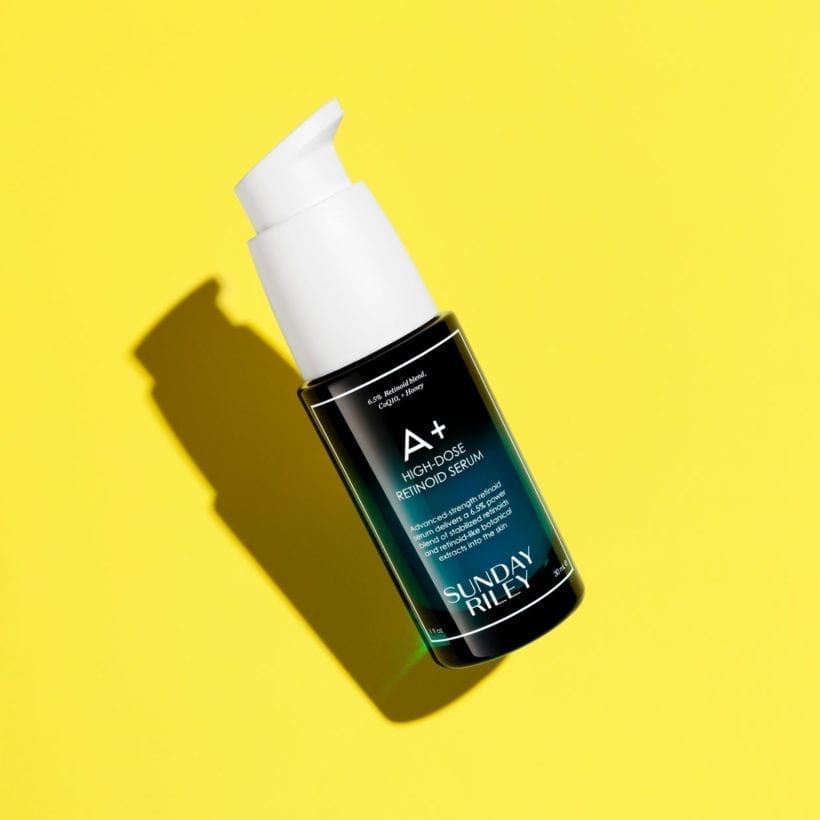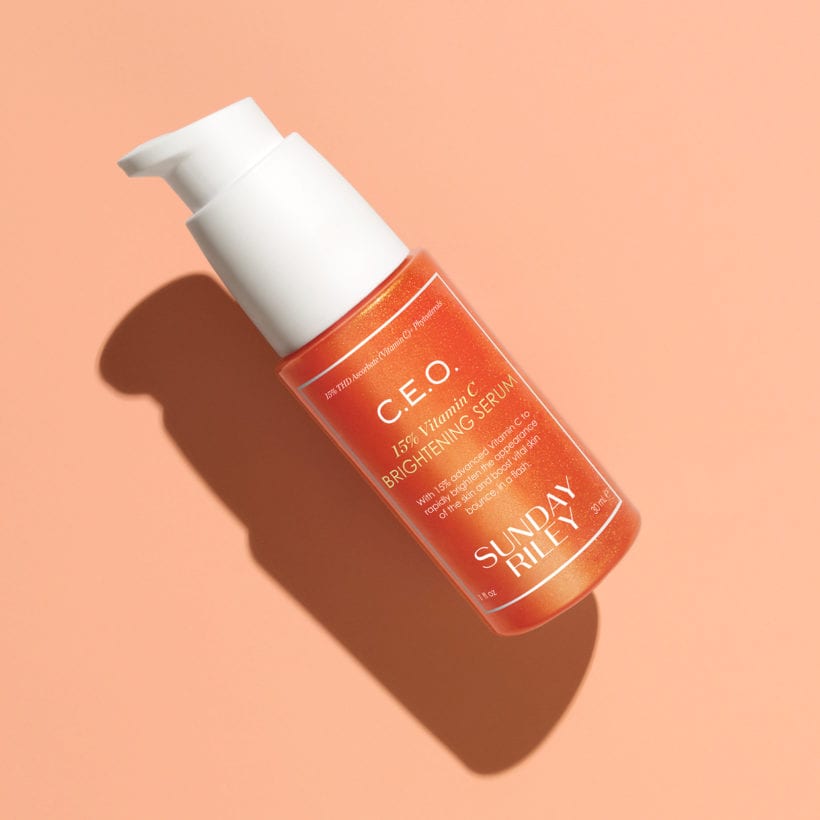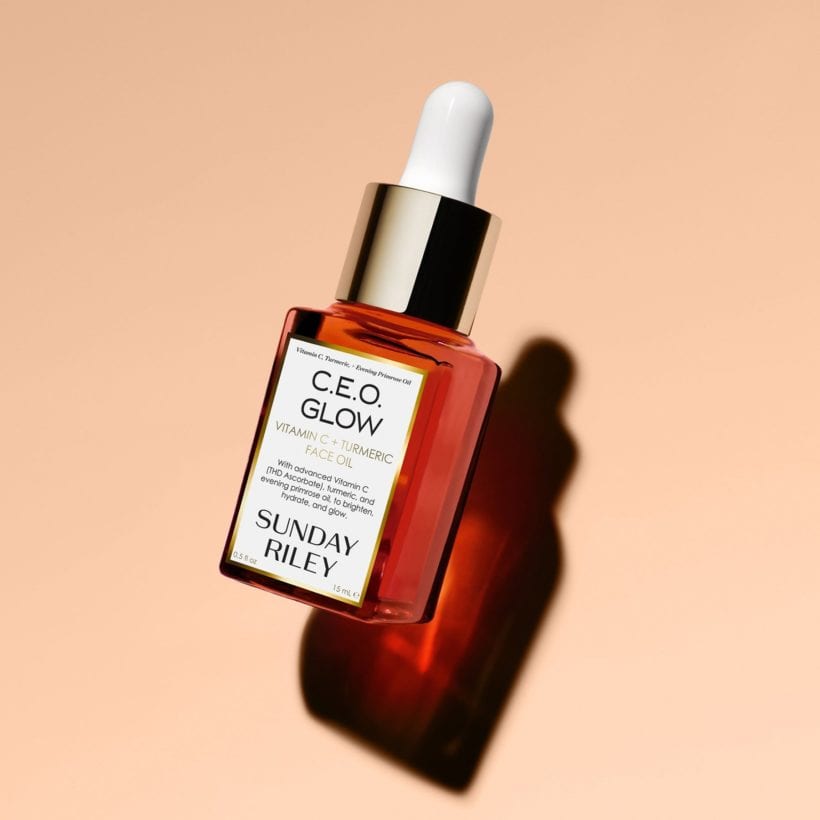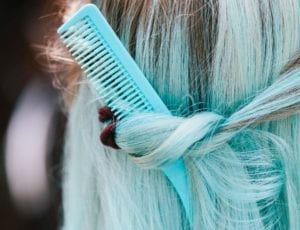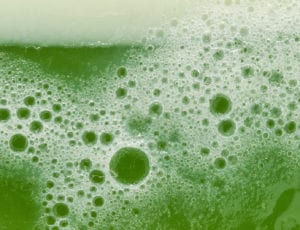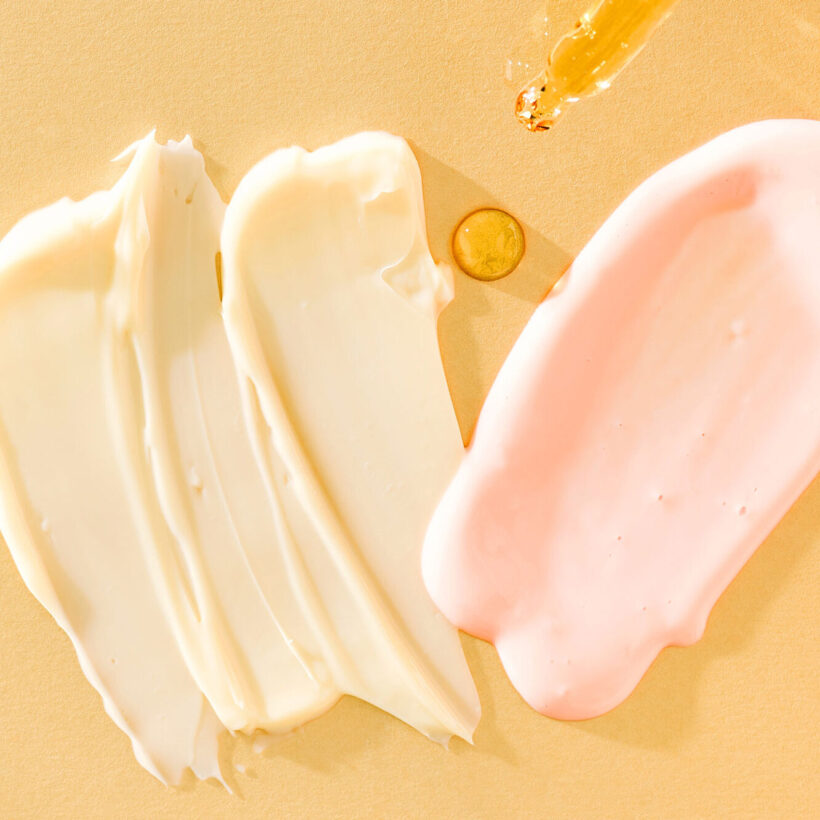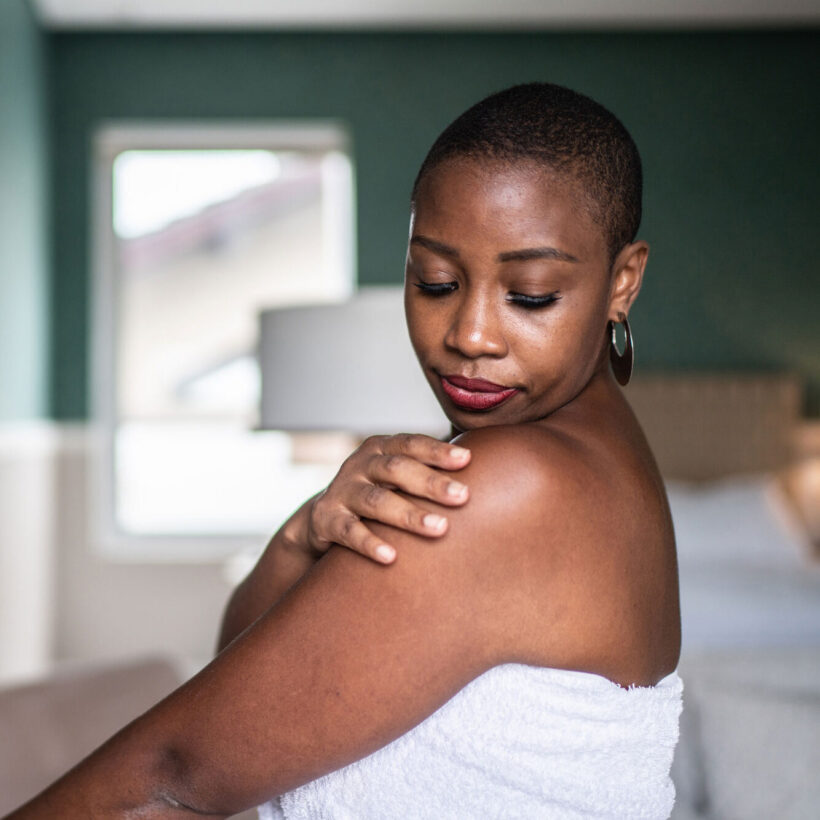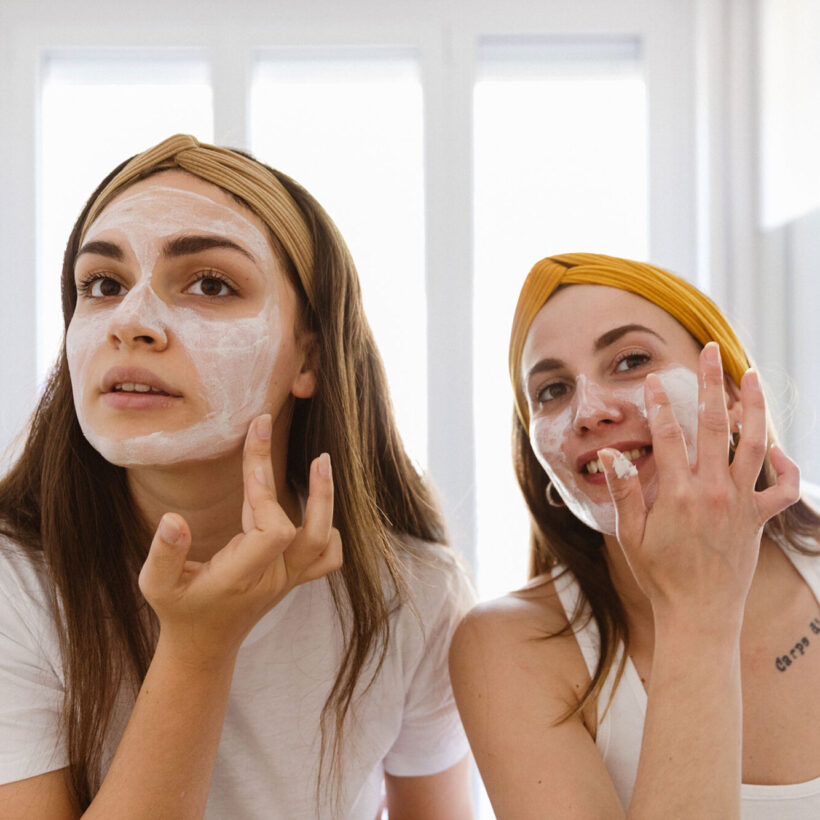Between acne-prone and oily skin, hyperpigmentation holds its own as a notorious and widespread skincare concern. Those darkened patches are reluctant to exit stage left once they arrive, testing both your patience and the lasting power of your makeup. But there is a silver lining to this stormy cloud. When armed with a product routine tailored to your skin tone and type, hyperpigmentation can be significantly improved and, more importantly, prevented.
What is hyperpigmentation?
Hyperpigmentation occurs when skin cells overproduce melanin — the pigment that gives skin its color and provides a level of sun protection, — in response to an injury, or due to an underlying condition, explains Angela Lamb, M.D., director of the Westside Mount Sinai Dermatology Faculty Practice and chief technology officer of the Dermatology Department. And though hyperpigmentation may seem to materialize suddenly, there are three main culprits responsible for it: sun exposure, inflammation and hormonal fluctuations.
https://www.instagram.com/p/Bvmel2hnHX4/
https://www.instagram.com/p/BK4gNIkB-Z_/
https://www.instagram.com/p/BpzsiwPnOWp/
https://www.instagram.com/p/BamzriBnKh_/
https://www.instagram.com/p/Bu_ssj-hjXP/
https://www.instagram.com/p/BnoykppjxGv/
If sun protection has not been hammered into you enough, here is another reason to slather on SPF 30 every morning. “UV rays are what cause sunburns, and after time that repeated damage to the skin can cause visible damage like brown spots,” says Erin Murphy, a medical aesthetician at Restore SD Plastic Surgery. The affliction is indiscriminate of who it can affect, but melanin cells in deeper skin tones are more active and produce a pigment that is darker in color, says Murphy. When the cells are triggered, the darker pigments become hypervisible on the skin’s surface.
The second stimulant that kicks pigment-producing cells into high gear is post-inflammatory hyperpigmentation. Inflammation following a bout of acne, a cut or even a cosmetic treatment has the potential to leave stubborn dark spots behind.
Finally, hormonal fluctuations resulting from pregnancy or taking birth control can cause a type of pigmentation called melasma. Changes in hormonal levels can trigger melanin production that typically manifests as continuous patches around the eyes and mouth earning melasma the nickname of “pregnancy mask.”
How to get rid of hyperpigmentation
Though the causes vary and it can be extremely useful to know the root cause of your hyperpigmentation, the following are habits you can practice to help prevent it.
Sun Protection
For starters, treating hyperpigmentation begins and ends with sun protection. A daily layer of a good sunscreen and mitigating your sun exposure is your first line of defense against dark marks. Reach for physical sun-blocking ingredients such as zinc oxide, as they scatter UV rays rather than absorbing them into the skin and releasing them as heat.
If these sunscreens leave a white cast on the skin (they can get a bad rap for this), try cosmetic sunscreens over drugstore options to ensure the formula plays well with your beauty regimen whilst protecting against the full range of damaging UV rays. It may be tempting to forgo the sunscreen hassle altogether, but keep in mind all your product hauls and professional services will be in vain without the loving barrier of a broad-spectrum shield. Sunscreen will also keep current pigment issues from worsening while your skincare regimen works its magic.
Use the best hyperpigmentation products
You will want to incorporate at least two hyperpigmentation-fighting products into your routine to bring about faster, more effective results. “In general, I like a less-is-more strategy,” says Lamb. “[Like] a serum and a moisturizer. For ingredients, look for retinol and ferulic acid as well as Vitamins A and C.” Brightening agents are an integral part of treating pigment issues as they inhibit the over-production of melanin and even out your skin tone over time. Retin-A improves skin texture, reduces pore size and improves dyschromia, or abnormal brown and red spots.
Vitamin C is one of the most popular brighteners on the market. However, it comes in many varieties and is often unstable, making choosing the right type of utmost importance. Studies have shown the derivative magnesium ascorbyl phosphate (MAP) to be one of vitamin C’s most stable and easily penetrative forms. It also exhibits hydrating and anti-aging effects on deeper layers of the skin. Tetrahexyldecyl Ascorbate is another exceptional type of vitamin C and happens to be the star ingredient in C.E.O Face Oil. “Tetrahexyldecyl is my personal favorite form of vitamin C,” says Murphy. “It’s oil-soluble and stable, meaning it will penetrate your skin better and will not oxidize once exposed to air.” The effectiveness of vitamin C increases in proportion to its concentration (up to 20 percent), is suitable for all skin types and works well with other products. In other words, feel free to cozy up to those robust formulas!
When your skin is healthy, it is less likely to scar.
In the evening, reach for ingredients that promote cell regeneration. Retinol, a form of vitamin A, is a potent antioxidant that fights acne and speeds up the turnover period of aging and damaged cells. Similarly, chemical exfoliants like glycolic acid will slough away darkened cells to reveal healthy skin underneath. If you have sensitive skin, stick to gentler exfoliants such as lactic acid and less aggressive retinol concentrations to simultaneously treat your pigmentation and avoid irritation. Both retinoids and chemical exfoliants can sensitize your skin to sunlight and should only be used at night (and never at the same time), so it is a good thing you are wearing SPF anyway!
Professional Treatment
Along with your upgraded product assortment, professional treatments are key to a well-rounded attack on hyperpigmentation — but not every approach is safe for all skin tones.
Chemical peels and laser treatments work quickly on hyperpigmentation by forcing the skin to heal itself and push the overly-pigmented cells to the surface to be shed.
“Lasers for benign pigmentation can reduce the appearance of lesions that tend to be a distraction for some. Laser and light-based treatments, such as thulium lasers for diffuse pigmentation and Q-switched lasers or BBL for discrete spots, do not require significant downtime,” says Joel L. Cohen, M.D., a Denver-based dermatologist.
If your dark spots are genetic, which can happen with dark, raised bumps known as seborrheic keratoses (SKs), you can work to remove them using ESKATA. ESKATA is an FDA-approved in-office treatment where your provider will use the pen-like technology to apply a specifically made solution of hydrogen peroxide for hyperpigmentation to the SK, which then leads to overall fade and diminished appearance. Another option is Opté Precision Skincare System, which uses a wand to detect hyperpigmentation. Opté then analyzes the spots and releases an optimized serum to hide dark spots and reduce appearance over time.
Treating hyperpigmentation for darker skin tones
However, treatments that create heat and inflammation, like lasers and light-based treatments, run the risk of inducing more hyperpigmentation in darker skin tones. To treat hyperpigmentation in darker clients with chemical peels I typically start introducing acids into their at-home skincare routines first,” says Janette van Zyl, licensed health and skincare specialist and instructor at Atelier Esthetique Institute of Esthetics. “Then we start with a lactic acid peel which is much more forgiving and has a moisturizing effect. After that, I start bumping up the intensity of the peels over time and constantly maintain with lactic acid.” Additionally, microneedling is a viable option for all skin tones because it doesn’t involve heat. The treatment works by creating microscopic wounds that stimulate collagen production and break up the pigment. “Microneedling doesn’t show results as quickly as peels and lasers,” notes van Zyl. “But the treatment strengthens collagen and elastin and stimulates the skin’s natural moisturizing factors. When your skin is healthy, it’s less likely to scar.”
Now that you have a hyperpigmentation plan in your mind’s eye, don’t ignore what got you here in the first place. “The idea that you can treat dark spots without treating the underlying condition is false,” says Lamb. If acne is the root of your dark spots, Lamb opts for a treatment routine that simultaneously addresses both issues. In addition to daily sunscreen, making overall skin health a top priority will help you fight hyperpigmentation and keep it away for good.
We only recommend products we have independently researched, tested, and loved. If you purchase a product found through our links, Sunday Edit may earn an affiliate commission.

